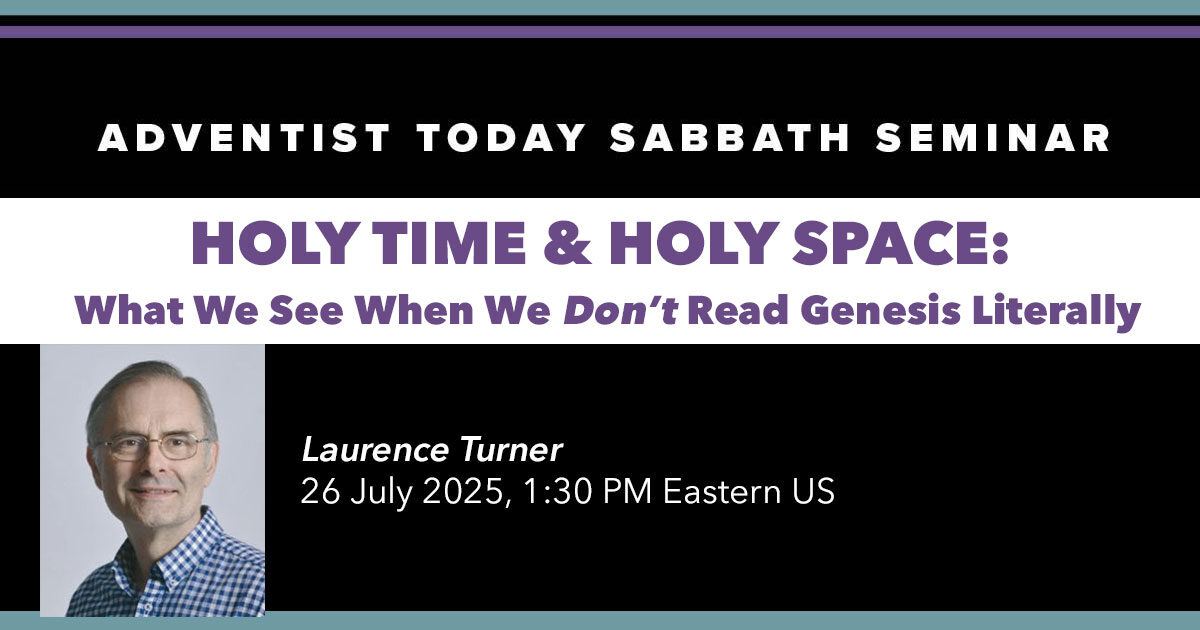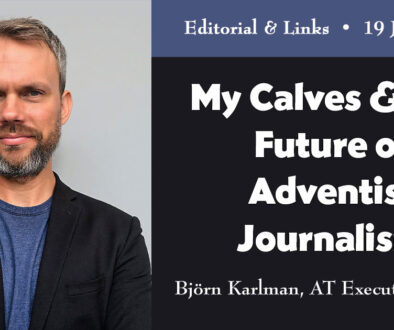ATSS: Laurence Turner: “Holy Time and Holy Space: What We See When We Don’t Read Genesis Literally”
23 July 2025 |
The opening chapters of Genesis, particularly chs. 1–3, continue to intrigue readers. Insights from obvious connections with the mythologies of Israel’s neighbours have enriched our understanding of the content and purpose of the narrative. Genesis is clearly in dialogue with the beliefs of its ancient neighbours and makes significant theological points in opposition to them. Without reading beyond Genesis, these significant connections are not seen and our understanding of the biblical text is impoverished.
Formal Adventist statements affirm a literal reading of Genesis 1–3 as the only legitimate approach. Thus, in these chapters God has revealed
“the authentic and historical account of His creative activity. He created the universe, and in a recent six-day creation the Lord made “the heavens and the earth, the sea, and all that is in them” and rested on the seventh day. Thus He established the Sabbath as a perpetual memorial of the work He performed and completed during six literal days that together with the Sabbath constituted the same unit of time that we call a week today.” (Fundamental Belief 10)
The emphasis on Genesis as a text that should be read literally is clear. However, just as reading beyond the biblical text enriches our understanding (e.g., comparisons with ancient mythologies mentioned above), so does a more careful reading within the Genesis narratives. In particular, Genesis 1–3 contains figurative language, such as metaphor, simile and symbolism. Reading figurative language and imagery as if it were literal would mean at best failure to see the depth of its meaning, and at worst to misunderstand the text’s intention.
“Images call for interpretation, and to leave biblical imagery uninterpreted is a great waste. The images of the Bible exist to tell us something about the godly life, something they will not do if they are allowed to remain as physical phenomena only.” (LeLand Ryken et al, eds., Dictionary of Biblical Imagery, p. xiv).
This seminar aims to explore the imagery of Genesis 1–3 and the implications of reading literally a text that contains much imagery.
Teacher:
Laurence Turner is Principal Lecturer Emeritus in Old Testament at Newbold College of Higher Education.
Moderator:
Cherri-Ann Farquharson is an alternative energy professional working out of Barbados.
How to join:
Join Zoom: https://us06web.zoom.us/j/83439050238
Passcode: GENESIS
ATSS starting time depends on where you are. If you’re on the west coast of the United States, it’ll be 10:30 AM. On the east coast, 1:30 PM. Times in Europe, Africa, and elsewhere will vary with local time changes. Please double-check the correct time where you live.
The class is intended to last about 2 hours, though the conversation often continues to 4 PM (Eastern time).
About our class:
- The AT Sabbath Seminar is intended to be a courteous forum.
- Stick to the topic in both comments and chat discussion.
- Make your comments and questions short—don’t dominate.
- Keep your microphones muted unless you are called upon to make your comment or ask your question.
- Indicate your interest in speaking by raising your electronic hand.
- Please use your name when you sign in, so we know who we’re addressing.
We look forward to getting acquainted with you!
YouTube channel:
You can see all of our previous ATSS recordings here.
Coming up:
- Lisa Diller
- Stephen Ferguson
- Kevin Burton




